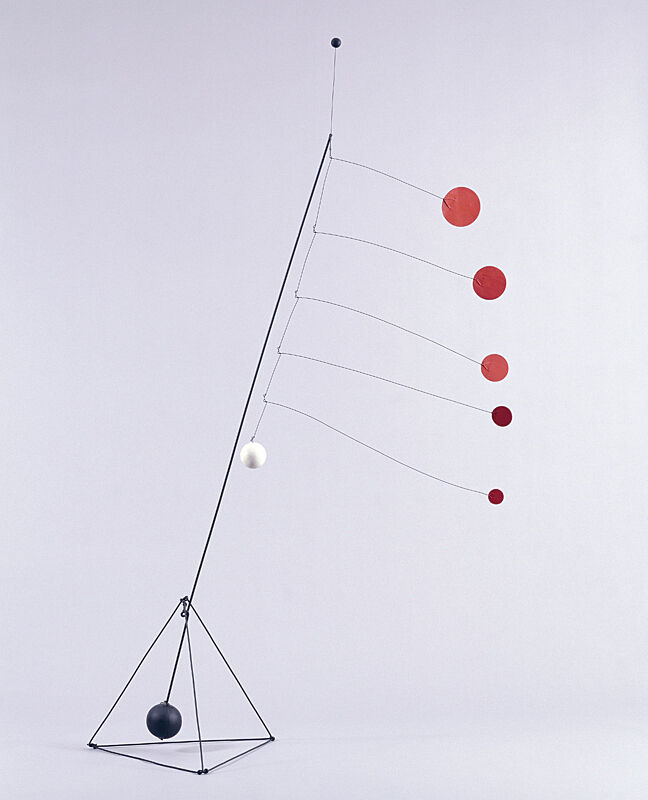Moving Sculptures
Discuss how Alexander Calder's sculpture might move
In 1930, Alexander calder visited the Paris studio of Dutch artist Piet Mondrian, where he was intrigued by a group of colored cardboard shapes pinned to the studio wall. The encounter inspired calder to start making abstract sculpture and prompted him to create the first abstract sculptures that moved. He carefully planned out his moving sculptures before he built them. He thought about how the object would move and what kinds of lines or shapes the different parts would make while in motion. These experiments would eventually lead to calder’s invention of the mobile.
Looking closely at Object with Red Discs, ask students to choose one part of the work to focus on. How would they imagine the sculpture might move? What would happen to the rest of the sculpture? Have students share their ideas with other students to see how they might have imagined the sculpture moving differently.

